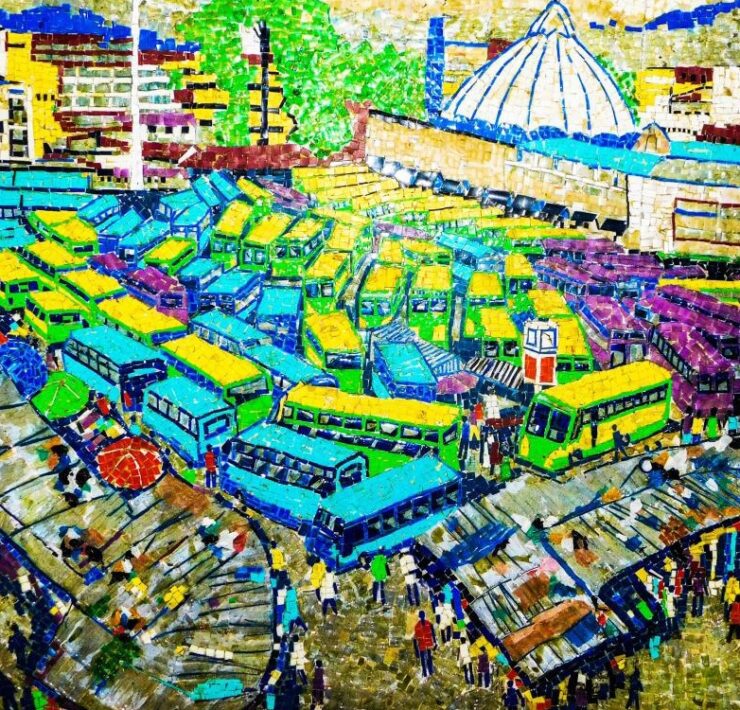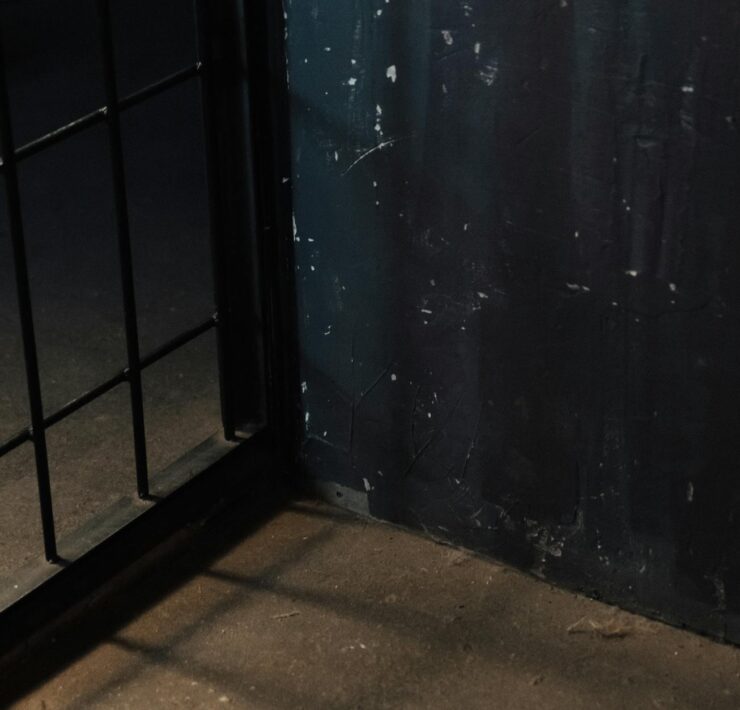TENGENENGE: WHERE THE SPIRITS WALK THE TALK

Justice Tawedzegwa. J. Mfiri is a pan African cultural advocate,…
Zimbabwe is a highly spiritual country, and the evidence of spiritual impact on its peoples is as clear as the Pungwe waters of the country’s eastern highlands. Zimbabwean architecture, fashion, cultural and creative industries, to mention a few, all contain strands of reflections on African Traditional spirituality.
While the Zimbabwean constitution guarantees freedom of worship, and various scholars have posited that Christianity is Zimbabwe’s biggest religion, it has become increasingly evident in the recent past, that the traditional value system of the African is embedded in the daily lives they lead, and imbibed in their norms, which they follow.
Masango (2006) argues that spirituality is not an independent entity that one can conceive of in a separate light from the lived experiences of society. Indeed, African spirituality writes itself in the daily lives of Christians, Muslims, and any other religion that is not traditional.
That said, I find it not surprising that the daily lives of Zimbabweans bear evidence of African spiritual values, through dreams, inspiration, language, and even art.
I have been to Tengenenge – an arts community in Mashonaland Central Province of Zimbabwe, Guruve. The arts community, owned by the National Gallery of Zimbabwe, hosts over a hundred artists and stone sculptors. Tengenenge means the beginning of the beginning.


Walking into the space, I could feel an ambiance of African spirituality superseding everything else, including the art displays in the form of sculpture exhibitions.
It was my first time getting a first-hand experience watching nyau performance – and despite years of growing up oriented – by society – to fear, demonize and avoid them, I felt unusually drawn to wanting to see them perform, recording on my camera. I do not regret the experience.

A proper welcome treat it was, and the fusion of traditional muchongoyo dance with nyau is one whose depth was immersing. Performances transitioned from muchongoyo to nyau seamlessly, with mutuality and parity.
The visitors clapped, whistled, and ululated, amazed by the spirited performances by the dancers. Underlying the art was a whole spiritual force that I felt, uniting all – an audience comprising of different ethnicities and races.
“The forms of dance culture come from the two basic groups of people present at Tengenenge,” said Steve Blomefield, son of Tom Blomefield, the original owner of the farm that was turned to Tengenenge Arts Center.
Tengenenge hosts artists of Western Bantu origin, that is, from Malawi, Angola and neighboring countries. These have a particular drumming and dancing style known as nyau.
The other group represented is of Eastern Bantu origin, hailing from countries like Mozambique and the local Shona. These people perform the muchongoyo dance style. Both cultures have special features.
So Tengenenge is a hybrid community that presents the practicability of African cultures co-existing in the beauty of diversity. It stands as a model of the fruition of the pan-African dream for a borderless Africa.
Tengenenge only started as a white-owned farm during settler colonialism in Rhodesia, owned by Tom Blomefield. When Rhodesia was under sanctions, farming became unprofitable. In 1966, a Shona man came to the farm and asked Tom if he wanted to learn how to do sculpture.
Tom seized on this opportunity because it would be a new business to provide his workers with income. From 1966 to 1971, he sold sculptures through the then-Rhodesia national gallery.
In 1971, several artists exhibited sculpture at the Museum of Modern Art in New York. Things got tough between that time and 1980 because of the sanctions and Zimbabwe’s liberation war, the Chimurenga. So the farm was sold and the art community moved on to the serpentine mine.

In 1980, art buyers started coming, first in a trickle, then in numbers. Eventually, there were 30 000 sculptures there, making it the biggest gallery in the world. Many of the pieces were world-class art.
By 1990, Tengenenge artists were exhibiting in Australia, Britain, Holland, Germany, Norway, France, America, and even Japan. Zimbabwe earned fame for the artistry and quality of its art, a reputation it holds to this day.
Let The Stone Lead
“Every stone has a sculpture in it, and it is my duty as a sculptor to free it,” writes Agrippa Tirigu on his zimsculptures.com website. Agrippa, a resident artist at Tengenenge, believes that one cannot force his ideas upon stone, but has to carve it following the stone’s will – thereby successfully freeing the sculpture already existing in it.
“My artist statement is, ‘Let the stone lead you,’” says Agrippa, while furthering that whenever he does not follow this principle, he is not successful in his sculpture – the stone may crack, and the project is laid to waste.
One can only find the spirituality in this astounding, yet it is not a lone case. I talked to a female sculptor at Tengenenge, her name Wedius Madzamba. Within her collection was a very striking 30-centimeter sculpture of a mermaid with one breast, some parts polished, and others unpolished.
“The inspiration for this one came from a dream,” she said and narrated her dream. The dream featured a mermaid that got attacked by a crocodile in the waters. The crocodile ripped off her breast in one bite, and the mermaid realizing that she could lose the other quickly fled from the crocodile. The sculpture captured the exact moment the mermaid fled, with blood dripping, one breast left, face in despair, and body in a twist of sudden flight. Sculpture is spiritual!

Wedius conceded that she is not a “gombwe” – one who receives messages from the spirit world, particularly the ancestors, then passes them to the world of the living while in a trance, but affirmed that art is spiritual communication.
“Sculpture is a way of preserving our culture. Our elders used to do it, and now we are doing it in the faith that the future generation also takes from us,” said Wedius.
So, indeed, the stone leads. And when the stone leads the artist, who in turn leads the society, the stone leads the society! This is why the artist is society’s hope – because she is the only expressive link between the nostalgic past and the present. Society’s future is entirely dependent on people’s understanding of their past, as Joshua Maponga always says.
Nothing is Cast In Stone?
The descendants of the KhoiSan who defied narrative, and cast their story in stone through rock art and engravings are alive! The descendants of the Bantu who built Mapungubwe, Masvingo, Khami, and all similar stone civilizations are in good stature.
The Great House of Stone – as the name Zimbabwe translates, is indeed dominating by the same virtue the Conical Tower towered as the center of trade that controlled exchange from Southern Africa right up to the middle east.
Yes, the same tower that linked the people to God the Creator.
The spirit of the ancients who built the biggest stone civilization south of the Sahara, only second to the Egyptian pyramids, still speaks with the same fluency as before. Remember the monoliths that carried Zimbabwe’s hungwe birds at Nemamwa six centuries ago? All in good faith, the art has outlived its curators!
A lot is cast in stone! That is why a whole 300-meter hallway at Atlanta International Airport is adorned with stone sculptures from Zimbabwe. Art is vibrant. That is why it is present in the architectural designs of Masvingo and the most contemporary buildings, fashion wear, and religious shrines.

Think of the chevron pattern of Great Zimbabwe, and how it has replicated itself in every aesthetic form of expression in the land between the Zambezi and Limpopo. Nothing is cast in stone? When the Hungwe bird and other stone art, cultural symbols, and religious items were taken from the motherland to be presented in museums in Europe? There sure is something about the stones of Zimbabwe, that the world must bow down to with the correct reverence. As the spirits walk the talk at Tengenenge – the beginning of the beginning, it seems ever increasingly needful that Zimbabwe begins to open her eyes to the spiritual dominance she already carries on the global stage, unlock it, claim her space on the table of world powers then utilize that to the advancement of African interests, for the prosperity of all black peoples for posterity.
What's Your Reaction?
Justice Tawedzegwa. J. Mfiri is a pan African cultural advocate, artist and co-founder of the Zimbabwe Institute of African Integration (ZIAI). His work is inspired by the desire to change the narrative on Africa and celebrate the beauty of African cultures in their diversity. Through his work as Founding Secretary to the Zimbabwe Institute of African Integration (ZIAI), Mfiri continues to bear the torch on African Renaissance from a youth perspective, and even more, from a cultural and creative perspective. He can be contacted via his social media, email or at +263 775 754 013


















